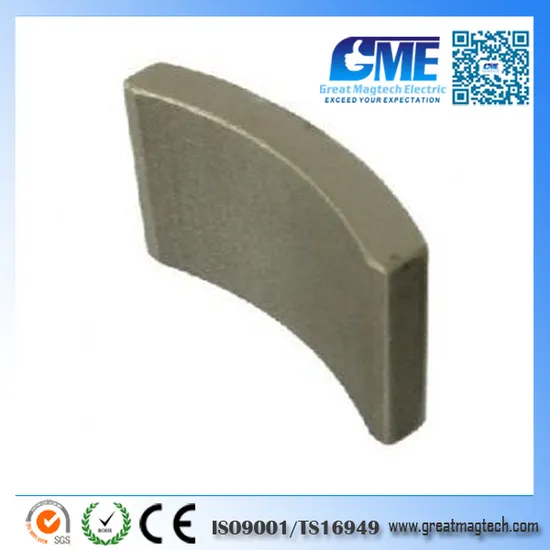
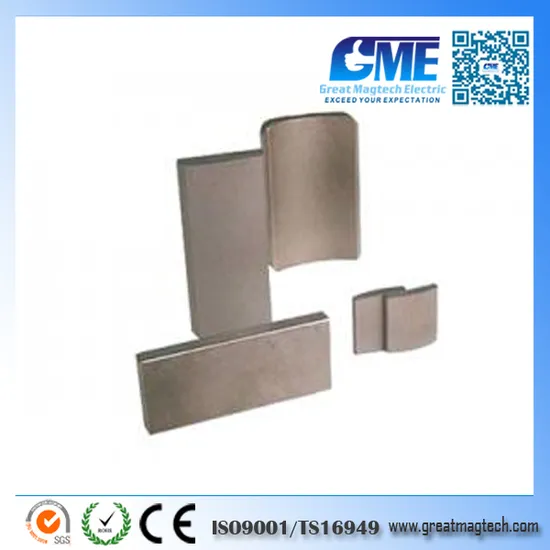
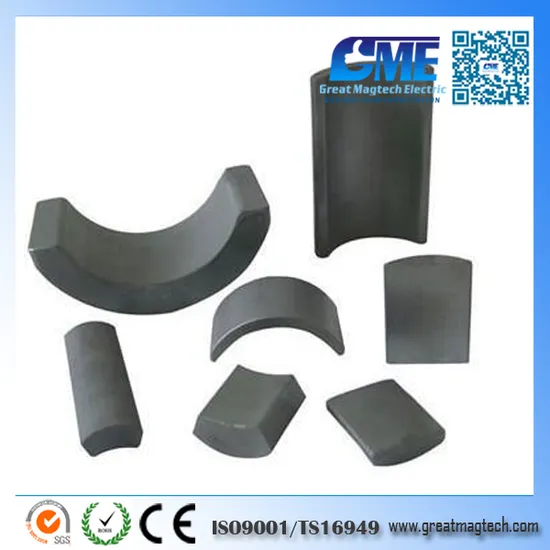
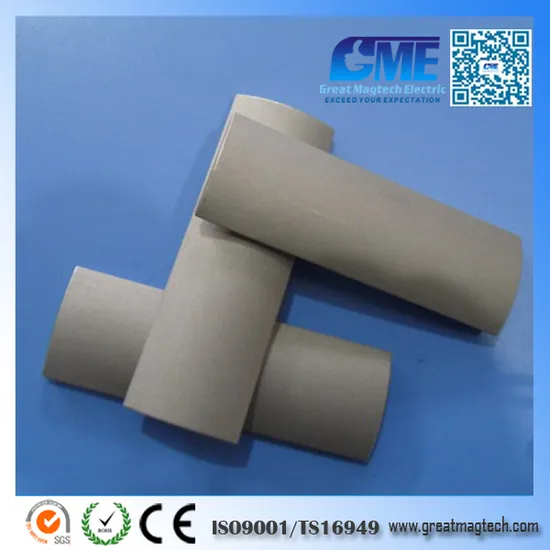
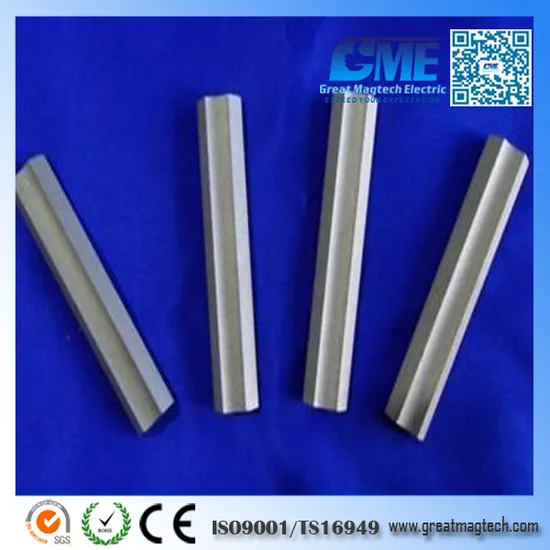

Preview
基本信息产品详情证书
基本信息
| 型号编号 | 钐钴磁铁 |
| 涂层 | 常常是没有 |
| 产品名称 | 高温强弧钐钴磁体 |
| 环境管理体系 | ISO9001/14001 |
| 钴基超强磁铁鉴定书 | CE/RoHS/SGS |
| 钴锆铕磁铁的容差 | 正负0.05毫米 |
| 钐钴的磁化方向 | 轴向/径向/多极磁化 |
| 钴钴锇磁铁的运输 | 海运、空运、快递 |
| 钐钴磁铁的工作温度 | Max 840 C |
| 山姆钨钴磁铁的交货时间 | 7至20天 |
| 钐钴磁铁的打包 | 抗磁化铁箱和纸箱 |
| 支付 | T/T、贝宝(Paypal)、西联(Western Union) |
| 交通包 | 纸箱、防磁包装、托盘 |
| 规格 | 定制的 |
| 商标 | GME三重钴基合金磁体 |
| 起源 | 浙江宁波/福建厦门 |
| 商品编码 | 850511100 |
| 生产能力 | 3000吨 |
产品详情
Product Description
Preview
Samarium Cobalt magnets: good thermal stability, resistant to corrosion, resistant to demagnetization
Machining & Magnetization
Advantages:
Extremely resistant to demagnetization
high temperature stability (max operating temperatures between 250
°C (523
K) and 550
°C (823
K); Curie temperatures from 700
°C (973
K) to 800
°C (1,070
K)
Expensive and subject to price fluctuations (cobalt is market price sensitive)
Disadvantages:
Samarium cobalt magnets can easily chip; eye protection must be worn when handling them.Allowing magnets to snap together can cause the magnets to shatter, which can cause a potential hazard.Samarium-cobalt is manufactured by a process called sintering, and as with all sintered materials, inherent cracks are very possible. These magnets do not have mechanical integrity; instead the magnet must be utilized for its magnetic functions and other mechanical systems must be designed to provide the mechanical reliability of the system.
Comparison between neodymium and samarium cobalt
Manufacturing Methods
Compression Bonded - this is a technique whereby a special form of SmCo powder is blended with a plastic carrier material, die pressed and then heated. Parts made in this way can be of complex shapes and come off the tool with close tolerances, requiring no further finish machining. They have lower energy products than sintered materials - currently in the range of 15 MGOe.
Machining & Magnetization
Advantages:
Extremely resistant to demagnetization
high temperature stability (max operating temperatures between 250
°C (523
K) and 550
°C (823
K); Curie temperatures from 700
°C (973
K) to 800
°C (1,070
K)
Expensive and subject to price fluctuations (cobalt is market price sensitive)
Disadvantages:
Samarium cobalt magnets can easily chip; eye protection must be worn when handling them.Allowing magnets to snap together can cause the magnets to shatter, which can cause a potential hazard.Samarium-cobalt is manufactured by a process called sintering, and as with all sintered materials, inherent cracks are very possible. These magnets do not have mechanical integrity; instead the magnet must be utilized for its magnetic functions and other mechanical systems must be designed to provide the mechanical reliability of the system.
Comparison between neodymium and samarium cobalt
Manufacturing Methods
Compression Bonded - this is a technique whereby a special form of SmCo powder is blended with a plastic carrier material, die pressed and then heated. Parts made in this way can be of complex shapes and come off the tool with close tolerances, requiring no further finish machining. They have lower energy products than sintered materials - currently in the range of 15 MGOe.
Preview
证书
标题:GME-ISO14001 Certificate

Preview


 厦门
厦门  已认证
已认证
